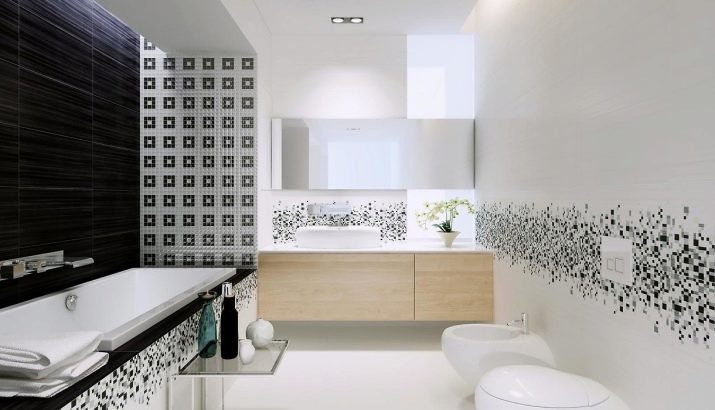Making a bathroom with white tiles seems so ordinary and template solution that no one sees anything complicated in it. However, in reality, such a “primitive” design opens up a number of unexpected prospects. With a skillful approach, you can get rid of long-standing stereotypes and make the room extremely enjoyable for the whole family.
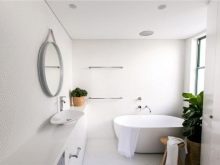

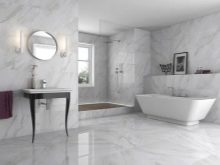
Color features
The use of white tiles in bathroom decoration has been practiced for many decades. This tone is considered neutral in its purest form, however, it will be able to perceive the emotional charge from any adjacent color.
The undoubted advantage of white is the lightening of space and its visual expansion.
In a snow-white bath, all sizes seem larger than they really are. This is especially important in old houses where the dimensions of the bathroom are discouragingly modest.
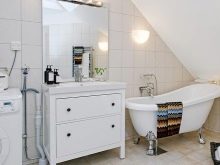

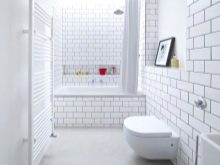
However, we must not forget that on the white surface any dirt accumulates very easily. It is unacceptable to use a white tile alone, because it will immediately create associations with the surgical department, not to mention that it looks boring. The exception is snow-white interiors, referring to the aristocratic houses of the 1920-1930s.
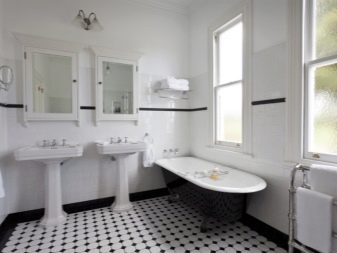
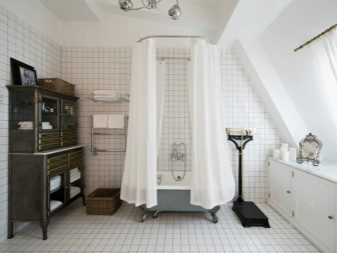
Kinds
White color can have a variety of tiles. Simple material without enamel coating is appreciated for its excellent strength and resistance to mechanical and chemical influences. Such material looks very concise. Its main advantages are deservedly considered:
- smoothness;
- the exclusion of some external catchiness;
- perfect match with the canons of provence, minimalism and hi-tech.
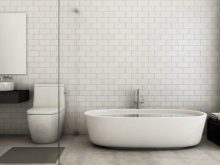

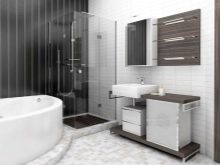
The so-called pressed tile. It is made, as it is not difficult to understand by name, by strongly compressing the clay mass. This processing technique provides a particularly smooth surface. Pressed blocks are equally suitable for any classic or modern interior. Deserves attention and glazed tile, in the descriptions of which they certainly mention a special brightness and a shiny surface.
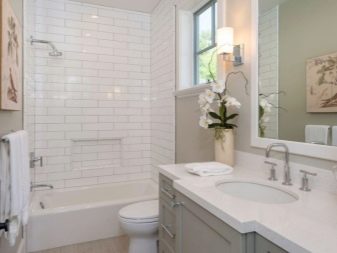

Clinker tiles are often used for floors. In addition to the unusual color, clinker is distinguished by a specific chemical composition. The excellent quality of the products is ensured by the presence of several grades of clay and highly resistant dyes. And for the walls in some cases used metlah material. They burn the metlah tile once, and it cannot have glazed surfaces. But there is a matte shimmer, attractive texture.
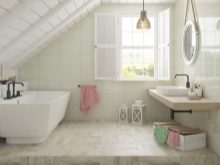
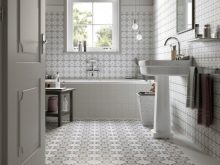

As for originality and beauty, the mosaic type of tiles is significantly distinguished by these parameters. It is created on the basis of glass or porcelain stoneware. The peculiarity of the white mosaic is the ability to show with its help a variety of stylistic directions and thereby fit into any interior. But porcelain tiles are valued for another property - excellent mechanical strength, which is unattainable when using other materials.
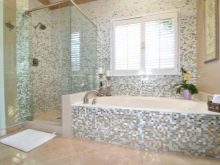
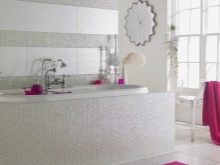
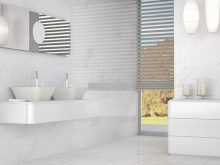
Materials and Design
Before you get acquainted with the specific materials from which white tile for the bathroom can be made, you need to deal with its two key varieties, which have a glossy and matte sheen.
Gloss is prone to accumulate white coating after contact with water. Therefore, such a surface is not suitable for tiles laid directly above the bathtub or sink. However, it has an important advantage - the visual expansion of the room and improved lighting.

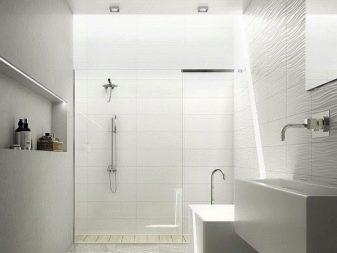
You can often hear that mirror effect - a kind of gloss. According to the design characteristics, the mirror tiles are really very good. However, experts know that they should be placed as far as possible from taps and shower spouts. In addition, hand touch is very poorly reflected on the mirror tiles. As for the material with silver and gold foil, it is more stable, but still does not deserve “testing” with abrasive cleaning.
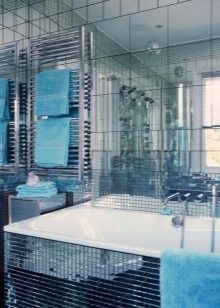


The matte type of tile is also not as simple as it seems. There are options that reproduce:
smooth and smooth velvet;
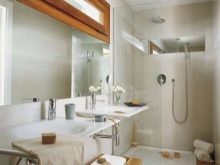
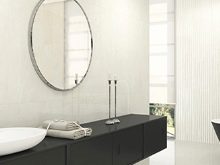
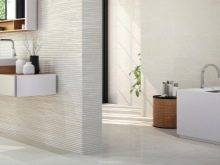
- wood texture;
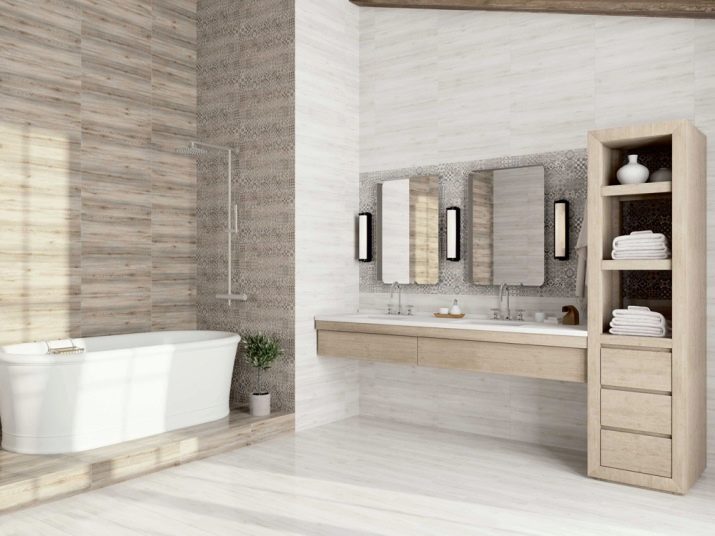
- the appearance of the raw stone;
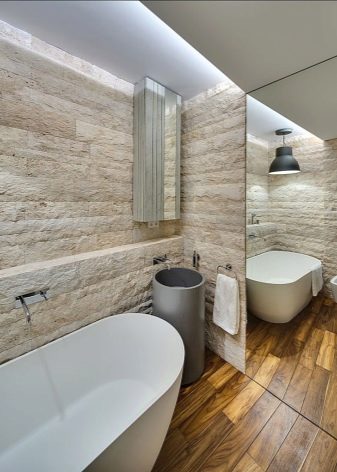
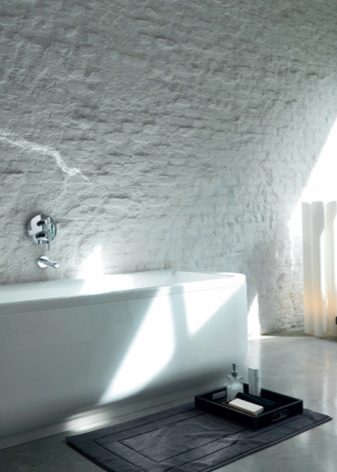
- clean and even concrete.
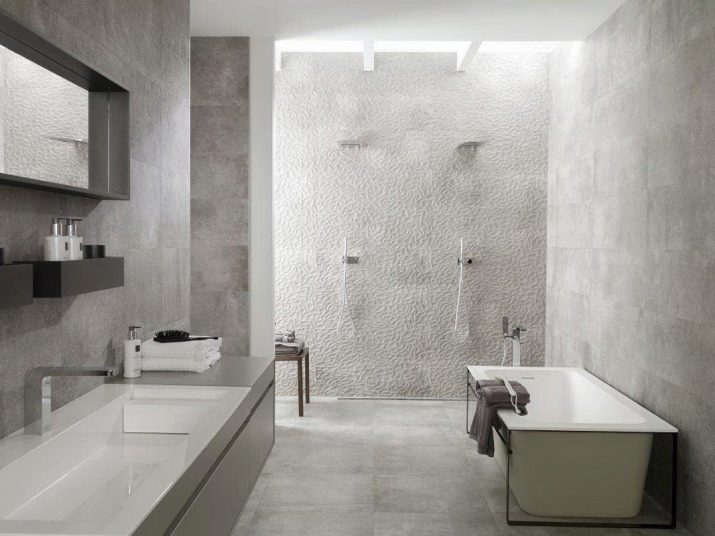
It is tiles with a velvety surface that are visually warmer and more pleasant. An important advantage of these is the minimal susceptibility to abrasion. Just such a material is laid on the floor, because it glides little. But the matte finish is not as bright as glossy, and after cleaning it still does not look perfect.
If it is very difficult to figure out which of the two options to use, you must give preference to half-gloss (lappated) tiles.
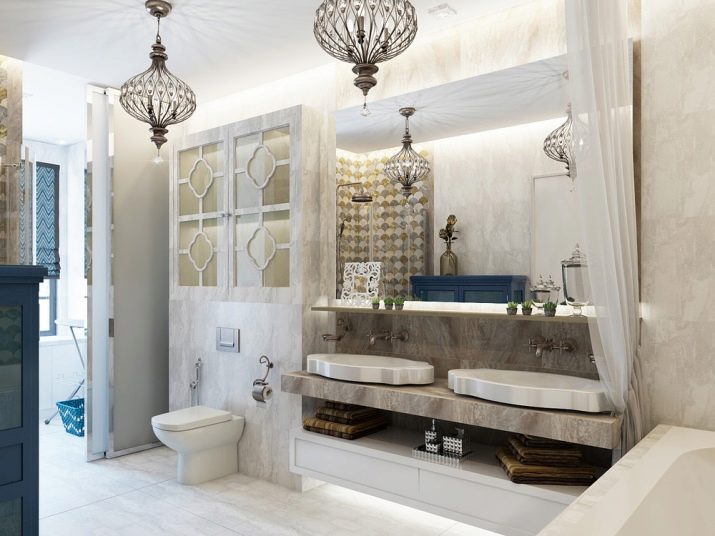
This texture is heterogeneous and forms beautiful “crumbling” glare. Water droplets cannot be seen on the lappated surface. For combination, it is advised to use the most dissimilar textures - matte and glossy type of tile. On each plane, tiles from one collection should be laid; their game in this case is unacceptable.
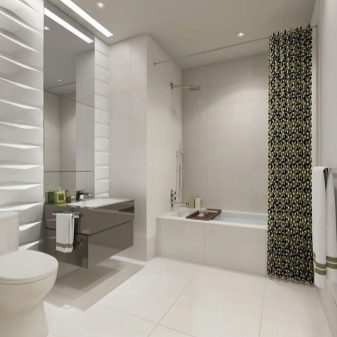

Tile - a type of ceramic finishing materials. All ceramics, including tiles, are made of clay with specially selected additives. But it is worth remembering that not all varieties of clay are equally suitable for ceramic production. Pure white varieties are very rare, and most deposits have components that give a completely different color.The percentage of clay turning into glass during firing is determined by the processing time and the temperature created.
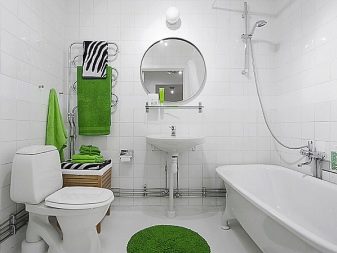
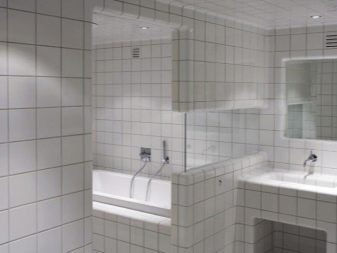
And already the proportion of glass directly affects:
- density of the finished product;
- its mechanical hardness;
- smoothness of the outer layer;
- intensity of water absorption.
Thanks to proven technologies, the original color of the clay mass has lost any significance. The word "tile" therefore does not reveal any qualities of the finished products and shows only that the feedstock had a light color. But another point is also important - completely smooth tiles to the taste of not every consumer.
Many people prefer embossed options. The pattern protruding above the surface looks embossed and adds volume.

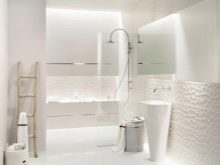
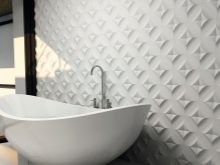
Such a solution is aesthetically pleasing and even creates a certain gloss that does not go beyond minimalism. This composition will look nice even without extraneous decorative elements. Because embossed tiles are definitely recommended for pure white bathrooms. To volumetric images, the eye is attracted in an almost magnetic way. But it must be borne in mind that the terrain greatly complicates the joining of tiles according to drawings and patterns, especially in the absence of proper experience.
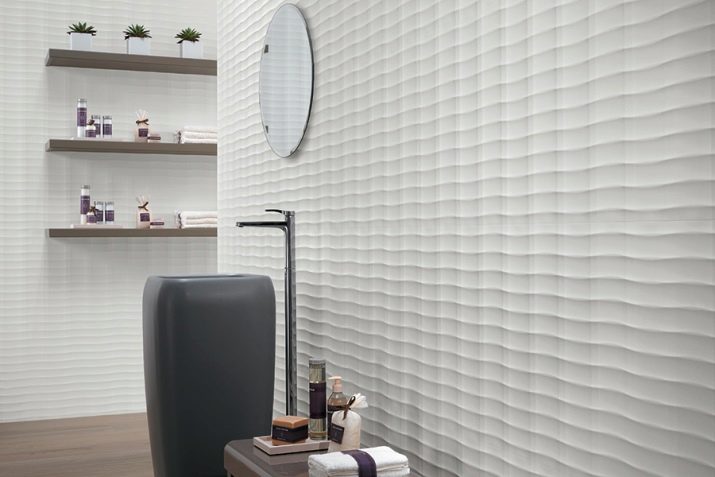
Embossed tile is represented by various options. Popular geometric compositions that repeat famous shapes, or ordinary lines. To stand out and demonstrate a certain luxury, imitation of natural stone helps. It may look more interesting if original roughness and atypical geometric shapes are used in the design. It is worth taking a closer look at tiles with folk ornaments, with images of various vegetation.
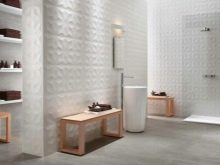
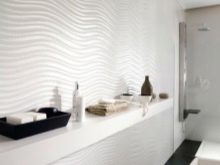

Textured material is most often produced embossed to duplicate the texture of wood, leather or natural stone. Such blocks are useful for wall decoration and flooring. This makes it possible to quickly select the best option without suffering from a combination of tiles from various collections. Deserves special attention mother-of-pearl variety of tiles. It is released in mosaic format.
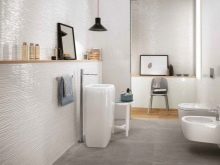
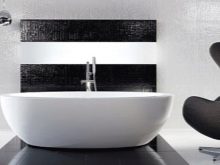
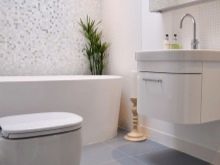
Mother of pearl is an organic substance that collects in sea shells from the inside. The color of this mineral depends on many biological and chemical processes, and more simply, on the quality of nutrition, on the characteristics of the water where the mollusk swims. Directly affects this and the intensity of sunlight. Mother of pearl mosaics are recommended for use in such styles as:
classic;
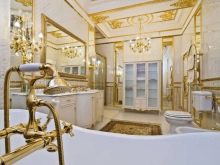
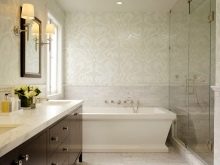
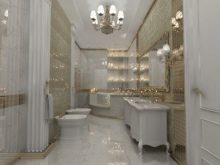
- rococo;
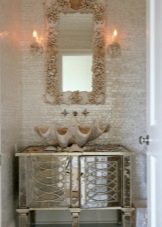
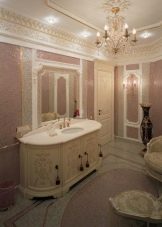

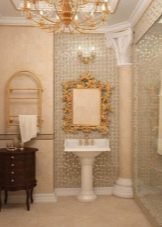
- high tech;
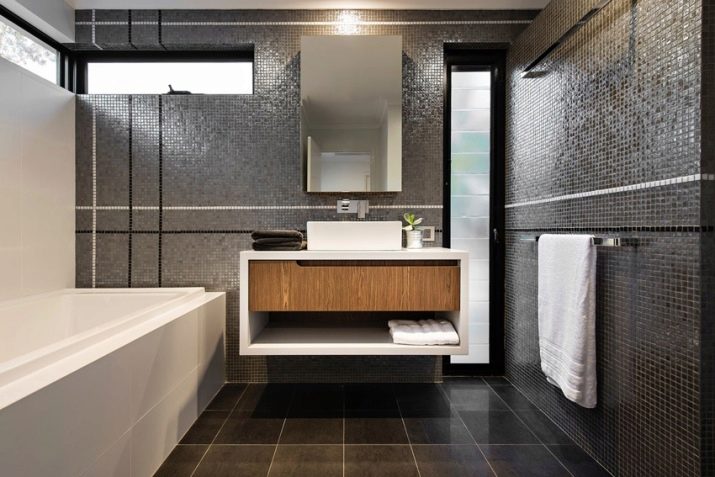
baroque.
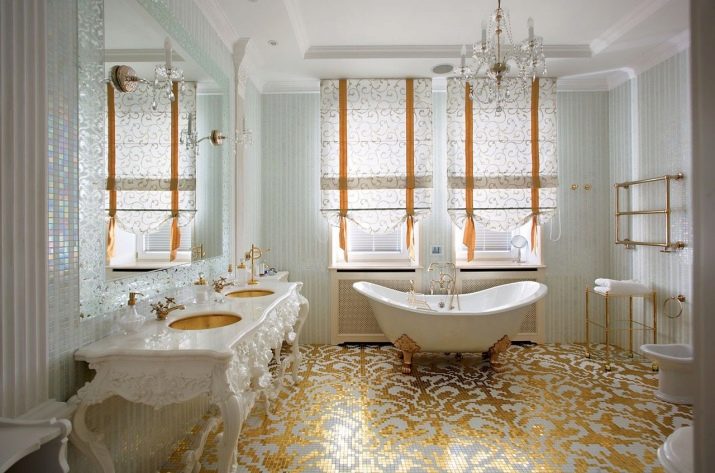
Forms
White tile does not have to have a strictly square or rectangular configuration; there are a number of much more original options. The use of diamonds opens up very interesting and extraordinary prospects. An additional charm is given by the combination of these figures with a variety of textures. But if the rhombic ornament is categorically unacceptable, it is worth considering an even more interesting version - the octagon. Such tiles are produced by all reputable companies and are displayed at any industry exhibition.
When it is planned to alternate similar shades and various textures, scaly tiles become an excellent choice.
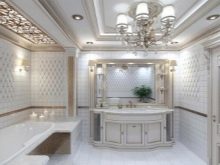
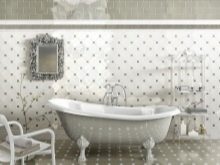
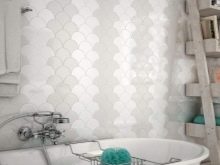
This material has various dimensions, therefore it can be used for both floor and wall. As for the “chevron” format, often mistaken for a traditional “boar”, these tiles have a slightly different configuration with a cut edge. This variety is very popular.
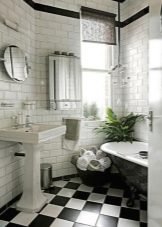
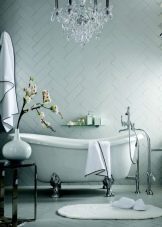
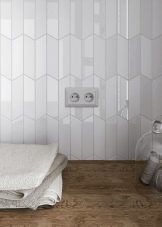
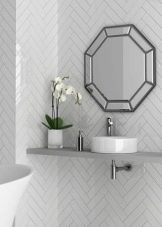
Chevron can be laid out not only according to the “Christmas tree” scheme, but also in other non-standard ways, even rhombuses. As for the arabesque tile, this is not always an element of oriental style, but invariably is an occasion to admire and be surprised. Triangular design elements are a seemingly long-known and very simple form, which is increasingly being revealed in an unusual format. Due to the difference in textures, an atypical external combination can be achieved. Tiles with a particularly original form do not appear on store shelves so often, but they are definitely suitable for creating a unique interior.


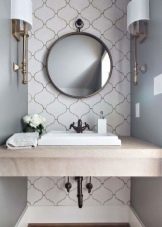
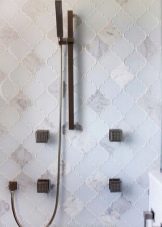
Dimensions
To diversify the appearance of the finishing material helps varying its dimensions. A large tile is one that has a size of 0.25x0.4 m and above. Such a solution is only appropriate in large bathrooms, because with a lack of space, it creates a feeling of excessive crowding. Facing bathrooms most often involves the use of blocks of 20x30 cm or 25x35 cm. Small decoration elements (10x10, 20x20 or intermediate 15x15 cm) are usually folded into mosaic patterns or used to cover curved walls.
The tile size is selected to minimize clipping.
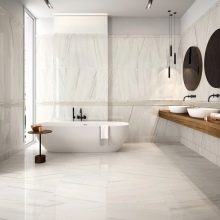


But we must remember that the larger the specific block, the more solution will be needed. To attach the tiles with a thickness of 0.4-0.9 cm, it will be necessary to create an adhesive strip with a thickness of 0.6-1 cm. It hardly makes sense to take into account the joint seams. The smallest mosaic tiles have a size of 1x1-5x5 cm, they are mainly produced in selections of several units connected by a polymer network.
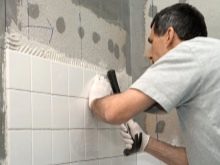

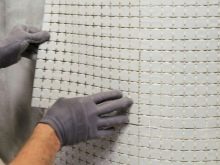
A rubber tile measuring 35x35 cm is placed on the ceiling of compact bathrooms. With sufficient free space, larger blocks are used - 50x50 cm. PVC cladding products have a size of at least 45.7x45.7 cm. Foam elements do not differ in length or width from rubber counterparts . However, they have a difference in thickness: for extruded tiles - 0.6-0.7 cm, and for injection - 0.9-1.4 cm.
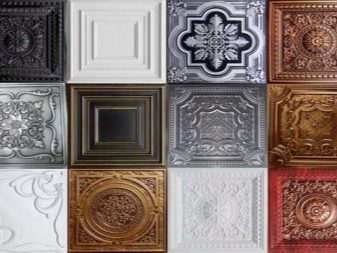

Popular brands
Knowing the size of a white tile is very important. But no less urgent point is a clear idea of the products of which brands you should trust. The collection gives excellent results. Bella by LB Ceramics. This collection is composed of elements that are very easy to combine with each other. Decorative ornament contains sparkles.
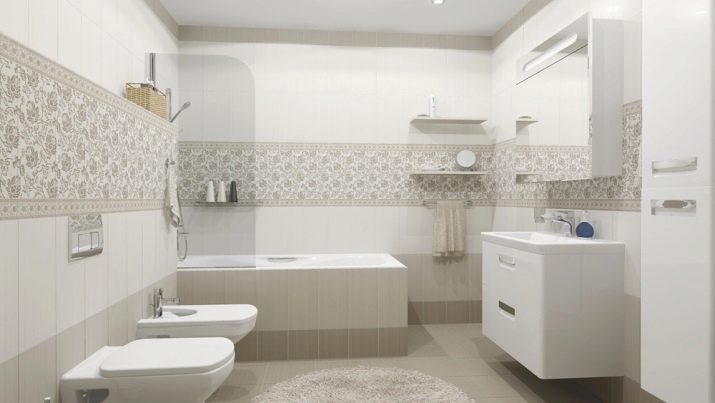
The tiles from Spain have very good characteristics. Firm Aparici It has been operating since 1961, and over the past time has significantly improved its technology. The company uses only raw materials of impeccable quality. This company can compete with tiles. Ceracasa, characterized by excellent environmental cleanliness. It is also characterized by excellent strength and low permeability to water.
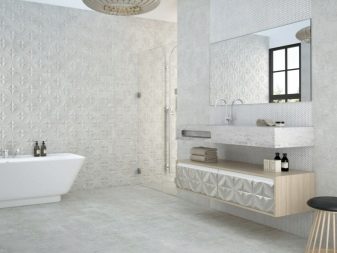

Product is in demand Kerama Marazzi. It is at the same time very good in quality and affordable. The main technologies the Russian manufacturer borrowed from Italy. Brand tile also deserves attention. Cersanit. 12 Polish factories of this company produce unique products with a glass border.
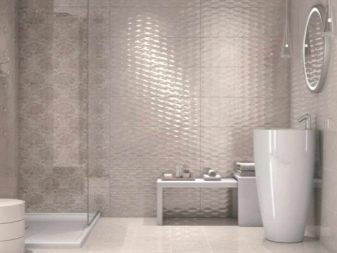
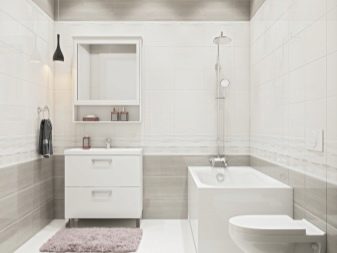
You can also give preference to tiles from:
- Azori
- Unitile
- LaFabbrica;
- Cerabati
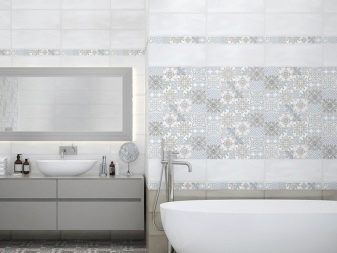
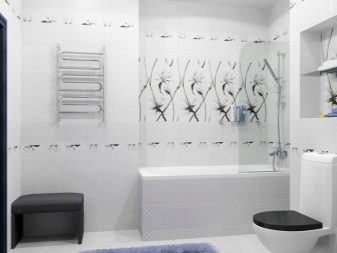
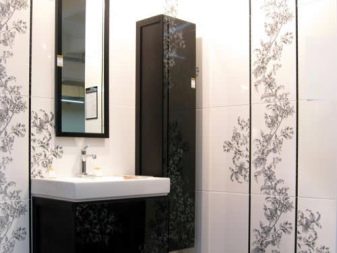
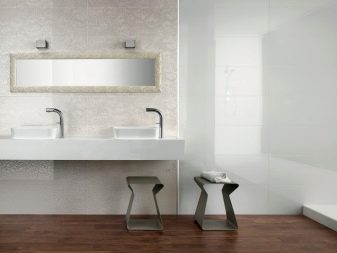
How to choose
In a small room, it is recommended to use the most light wall tiles. But to limit this requirement when selecting material for the "Khrushchev" is impossible. Be sure to consider the effect that artificial lighting produces. Glossy wall coverings can tire the eye due to glare.
On a limited area, it is impractical to place tiles with a large pattern.
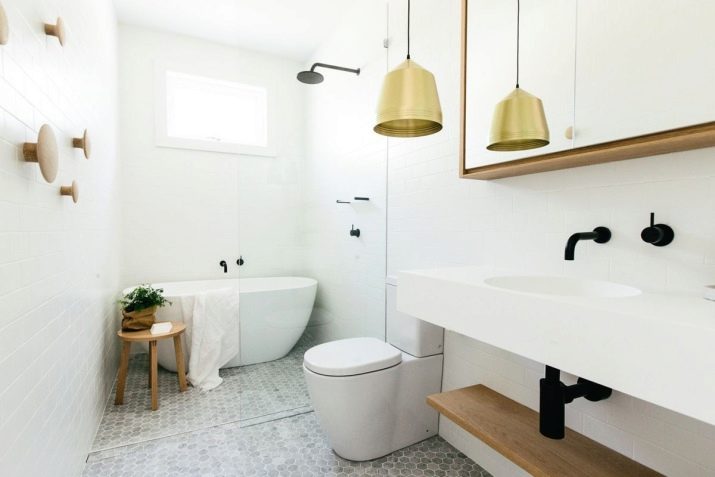
Regarding quality assessment, red marking recommended. In such parties can be no more than 5% of marriage. In domestic practice, color marking is almost never used, and therefore you need to pay attention to the inscriptions. It is also necessary to clearly distinguish between floor and wall variations that cannot replace each other.



Good color combinations
An attractive choice is considered a combination of white tiles and wood-like blocks. In this case, you can use white details without additional patterns. But the true classic is the blue and white composition. Together they expand the room and refresh it. As a result, a very elegant and pleasant impression is created in the white and blue tones bathtub.
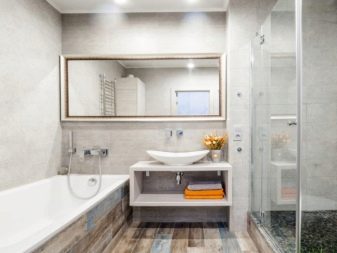

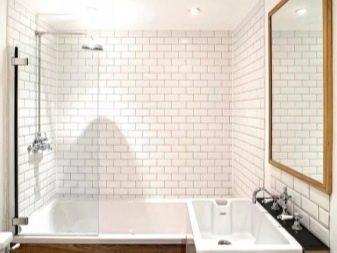
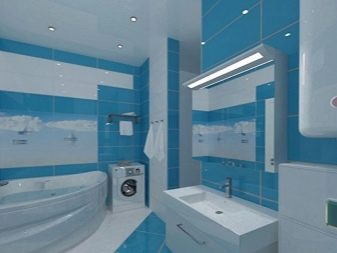
If you mix the basic light tone with gold, you get a very clean and benevolent look. So even the most luxurious setting will look natural and not too elaborate. You can also combine light tiles with terracotta color. In this case, a darker material is used to decorate the floor. Sometimes designers recommend not using pure white, but a milky shade.
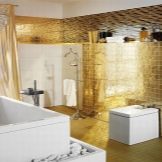
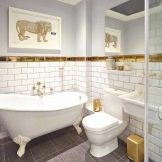
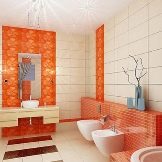

How to care
Experts advise washing the tiles in the bathroom at least 1 time in 6-7 days. Liquid cleaning products and gels are much better than abrasive compounds. A safer option is washing walls with a mild soapy solution.
It is especially bad to use hard brushes to clean glossy tiles. Acids and mixtures based on them can not be used for this.
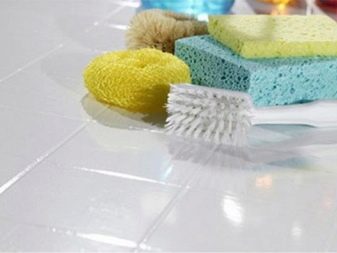
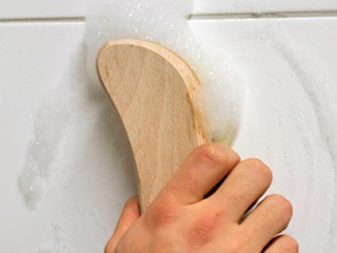
Disinfectant sprays and gels should be used with caution. They can not only harm the material, but also cause an allergic reaction. Vinegar, due to increased aggressiveness, should be used to wash the tiles only after checking for its inconspicuous part. The use of melamine sponges is allowed, but it is impossible to put pressure on them. Tiles located near and 2-3 rows above the bath should be cleaned more than once a week, but every time after washing.
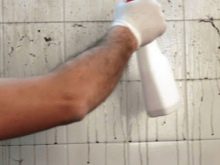

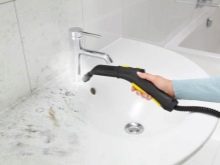
Interesting examples
The use of white and red colors can be very attractive. The photo below shows just such an example. Designers used thin red lines on a white background, which in itself does not look too usual. In general, the room is decorated in very bright colors. The contrast inversion also gives it attractiveness (a markedly red floor with a white “net”).
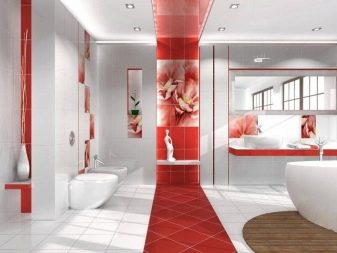
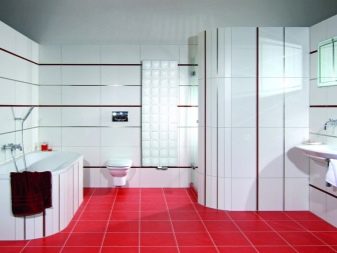
A more traditional solution is deservedly considered a black and white play of tones. But in this case, you can show originality. The photo shows how a white wall tile is harmoniously combined with a checkerboard floor design. To enhance the romantic mood at the very top of the wall, a “chess” line was also launched. For a clearer demonstration of the interior, they even used a transparent shower.
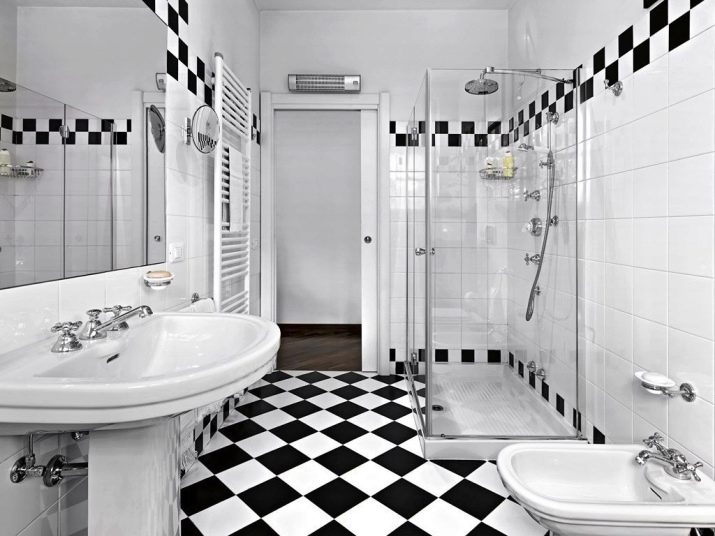
But you can do otherwise, using only one pure white color. The photo below shows how it is beaten due to the original pattern. This solution allows you to make the interior more interesting, despite the use of white for plumbing.
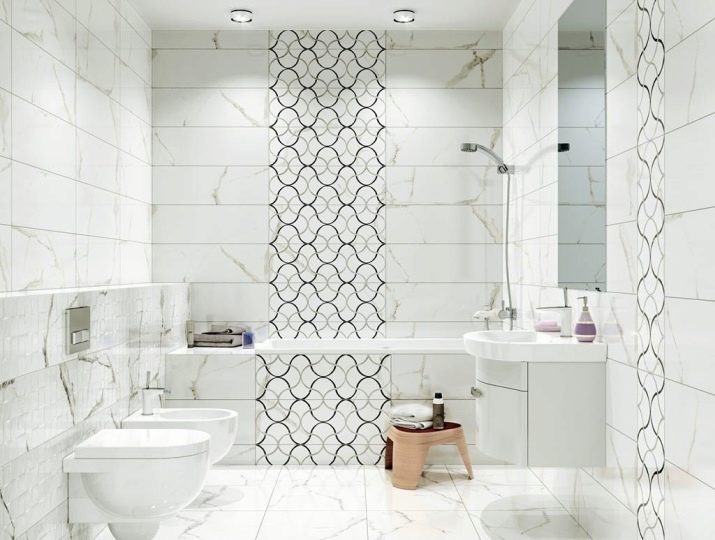
And here you can see how a number of black squares in one place and a black strip of the original look on another wall help transform space. Such a composition visually dilutes the white tile and helps to eliminate the uniformity attributed to it.
